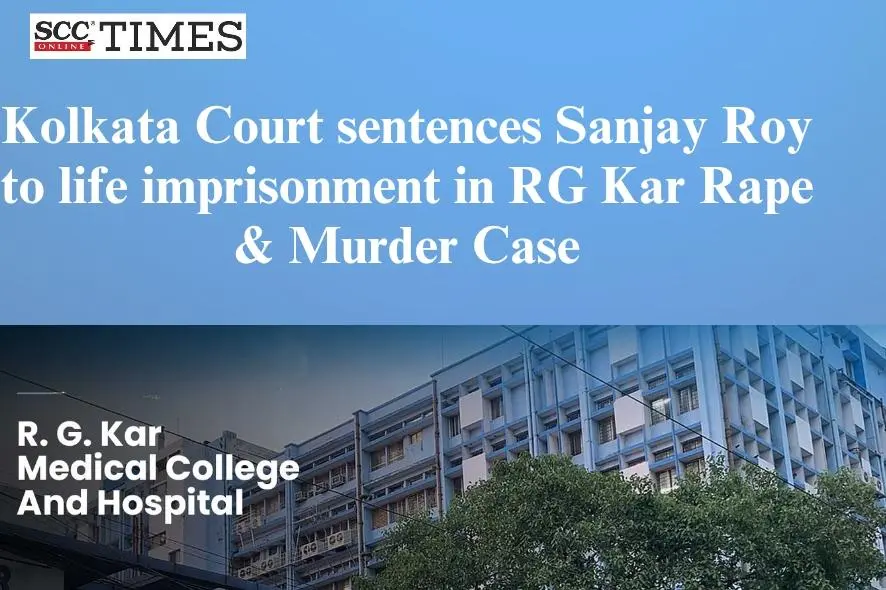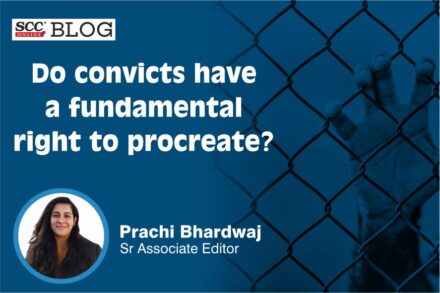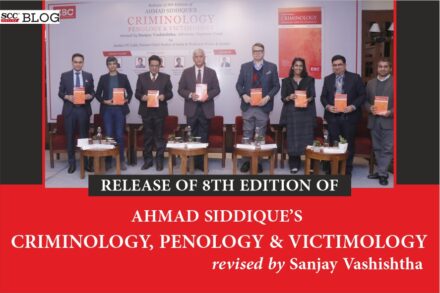Sealdah Criminal Court, Kolkata: Anirban Das, J., sentenced prime accused Sanjay Roy to rigorous life imprisonment and imposed a fine of Rs. 50,000 on the convict under Sections 64 and 103(1) read with Section 395 of the Bharatiya Nyaya Sanhita, 2023 (‘BNS’) each, and simple imprisonment for five months in default of payment of fine. He was further sentenced to rigorous imprisonment for the rest of his natural life under Section 66 of BNS. All the sentences were directed to run concurrently. The Court also directed the State to provide Rs 17 Lakhs as compensation to the family of the deceased victim. On 18-01-2025, the Court had found Sanjay guilty of the aforementioned offences.
Background
The deceased victim, a thirty-one-year-old postgraduate doctor at RG Kar Medical College Hospital, Kolkata (‘RG Kar’) joined her 36-hour duty on 08-08-2024. The next day, the complainant, the father of the deceased, was informed that his daughter was unwell. Upon reaching RG Kar, the complainant found out that his daughter was raped and murdered while she was on duty inside the seminar room of RG Kar. Subsequently, a complaint was lodged under Sections 64, 66, and 103(1) of the Bharatiya Nyaya Sanhita, 2023 (‘BNS’). By the order dated 13-08-2024, the Calcutta High Court transferred the investigation to the Central Bureau of Investigation (‘CBI’).
Sanjay was a Civic Volunteer of the Kolkata Police since 2018 and was posted under the Central Welfare Board. His job was to look after the police personnel and their family members at various Government hospitals. For this purpose, he used to visit RG Kar.
Analysis
1. The Incident:
After analysing the accounts of various witnesses and evidence, the Court held that the deceased was last seen alive at 2:50 AM on 09-08-2024 at the Seminar Hall, third floor of the Chest Department of RG Kar. The time of death was around 4:45 to 5:15 AM.
Regarding the presence of Sanjay at the place of the incident, the Court held that based on the CCTV footage, the location of his phone, and his admission under Section 351 of Bharatiya Nagarik Suraksha Sanhita, 2023 (‘BNSS’), he was present at the place of the incident around the time of the incident. The Court rejected the contentions that he was present in the area due to the surgery of a civic volunteer since he did not provide any details of the said civic volunteer or present any witnesses in that regard.
The Court also noted that, in the video footage, Sanjay was seen entering the third floor of the chest department with a pair of earphones hanging around his neck, but while exiting, the earphones were missing. It was contended that he went to the Male Ward, rested there, and forgot his earphones therein. The Court stated that it was hard to believe that any outsider would be able to enter and rest in the Male Ward without any surveillance. The Court noted that Sanjay could neither explain the whereabouts of the said headphones later nor the steps he took to get them back once he noticed that they were missing. As per the forensic evidence, the same earphones were found near the body of the deceased. Despite contending that the earphones were not his, the Court noted that Sanjay was unable to explain why the earphones showed continuous pairing with his phone.
The Court noted that according to the autopsy, the death was due to manual strangulation associated with smothering, and the manner of death was homicidal. Additionally, there was medical evidence of forceful penetration/insertion in the genitalia of the deceased, which was suggestive of the possibility of sexual assault. The Court noted that although it was uncertain whether the penis was inserted or not, there was evidence of forceful penetration, and there were injuries in and around the genitalia. Thus, the offence of rape under Section 63 of the BNS was made out. The Court added that there was no evidence of gang rape. The Court also noted that no semen was found from the analysis of the liquid found inside the body of the deceased. The Court stated that it could be the insertion of any other article other than a penis, and in that case, there would be no possibility of getting any stain of semen.
In the DNA analysis of the swabs from the body of the deceased, the Court found that the swabs contained a full DNA profile of Sanjay. Similarly, in the examination of Sanjay’s clothes and footwear which had blood stains, it was found that the said blood stains matched with the blood of the deceased. The Court stated that the presence of the deceased’s blood on his clothing and footwear went against his case since he also failed to give any reason for the same or any incident of implantation by the investigating agencies. Additionally, the Court stated that Sanjay’s DNA profile matching the DNA profile of the hair strands recovered from the spot of the incident proved his presence with the body of the deceased.
Regarding the motive, the Court stated that Sanjay admittedly had consumed liquor, and upon entering the seminar hall, he attacked the deceased on an impulse to satisfy his lust. Thus, the deceased was not his target, and he was unaware that the deceased was in the said Seminar Room. Thus, the offence committed by him was not pre-planned. Placing reliance on Nathuni Yadav v. State of Bihar (1998) 9 SCC 238 and Atley v. State of U.P. 1955 SCC OnLine SC 51, the Court held that despite the lack of motive, the prosecution case would not face the failure for want of direct evidence about the motive of the convict.
2. Procedural and Investigative lapses:
Regarding the contamination found in the nipple swab, the Court considered the video of the post-mortem and noted that proper protocol was not followed due to a lack of infrastructure at the post-mortem centre, and the doctors who conducted the post-mortem had no other option but to do their duty in such poor infrastructure. The Court stated that the video showed that there was every possibility of contamination in the post-mortem room, but for that contamination, the doctors should not be blamed.
The Court noted several illegal acts done by the Kolkata Police during the investigation of this case. The Court noted that one sub-inspector (‘SI’) made a blank entry in the general diary noting the time of the incident as 10:10 AM when he was not present at the police station. He later filled in the information at 11 PM. The Court heavily rebuked such illegal actions of the SI and stated, “This evidence of one SI of police is an eye opener that police stations are treating the cases in a very indifferent manner. It is also shocking that the concerned SI did not hesitate to say such illegal acts while standing in the witness box. I did not expect such type of evidence from an officer in the rank of SI of Police. It shows how they have entertained the issue even when the case became a sensitive one. I do not find any reason why such illegal acts were done by the concerned officer one after another and why he did not raise any voice against the same. It is very hard to believe that an officer in the rank of SI was unaware of the implication of such illegal acts, and before the Court, he proudly established his illegal acts again.” The SI contended that he was instructed to do so, but no information was given about the same.
The Court also noted that it was unclear why the parents of the deceased were not allowed/advised to complain and why the police authority kept them waiting till 6:00 PM to lodge a complaint. The Court stated,
“It is not understandable to me why the police personnel kept everything behind a curtain and why such type of illegal acts were done by the officer concerned.”
The Court further criticized the actions of the Additional OC, Women Grievance Cell in taking the mobile from Sanjay on 09-08-2024 and keeping it at the police station unattended. However, the Court stated that it was not established that she had done the act with any ulterior motive or that she had tampered with the data of the mobile. The Court noted that only a weak explanation was offered for the same, and there was no reason behind such an act.
The Court opined,
“As the Commissioner of Police, Kolkata is the highest administrative authority of Kolkata Police, I think that this type of illegal/indifferent acts of the police personnel should be tackled by him in a very strict way so that no one can escape and I also think that proper training should be given to the officers regarding investigation, especially in the cases where it rests upon circumstantial/electronic and scientific evidence.”
Regarding the conduct of the RG Kar Hospital Administration, the Court noted that undoubtedly, the hospital authorities made efforts to show the death as a suicide so that they faced no consequences. The Court also noted that upon receipt of the information that the deceased was raped and murdered inside the hospital premises, the Principal and the Medical Superintendent-cum-Vice Principal of R.G Kar did not send any official intimation to the police about such unnatural death, which was their duty. The Court stated,
“The said act of the administrative head of the concerned hospital creates a shadow of doubt about the fact, and it seems that they wanted to suppress anything and that there was a dereliction of duty on their part.”
The Court also noted that as per the evidence, there was free access of outsiders to any place in RG Kar, which proved that the unnoticed entry of Sanjay was not the only occasion. There were lapses in security for the doctors, especially those who conducted duty at night, prior to this case.
However, after considering the evidence, the Court stated that the negligence of the IO, the police administration, or the hospital authorities would not affect the prosecution case in any manner.
Decision
The Court held that based on the facts and circumstances, the CCTV footage, the version of Sanjay under Section 351 of the BNSS, the contradictory defence pleas without any evidence, and the DNA examination reports, Sanjay was undoubtedly the person behind the incident of rape and murder of the deceased and there was no involvement of any other person.
The Court further held that Sanjay had the opportunity to explain the circumstances, but he failed to offer any alternative explanation which denied his presence at the scene of the crime and negated the contention that no one else could have inflicted the said injuries on the deceased. The Court stated that the bald plea of denial offered by Sanjay and his explanation under Section 351 of the BNSS did not provide any explanation which would raise any suspicion in the mind of the Court. Thus, all the acts of Sanjay, in all human probability, only corresponded to his guilt.
Conclusion
Accordingly, the Court held that the prosecution was able to establish that Sanjay was involved in the incident of offence of rape under Section 64 of the BNS and murder of the deceased under Section 103(1) of the BNS at RG Kar on 09-08-2024. The Court also held that the charge under Section 66 of BNS was also established.
Regarding the aspect of the death penalty, the Court placed reliance on Bachan Singh v. State of Punjab (1980) 2 SCC 684 and stated that the present case did not meet the stringent criteria for being classified as “rarest of the rare.” The Court stated that the Supreme Court had consistently emphasized that the death penalty should be used only in exceptional circumstances where the collective conscience of the community was so shocked that it expected the holders of judicial power to inflict the death penalty.
The Court stated that it was important that the Court maintained its objectivity and impartiality by focusing solely on the facts and evidence presented during the trial, rather than being swayed by public opinion or emotional reactions to the case. Furthermore, the Court must consider the rights and circumstances of the accused, as well as the broader implications of its decisions. In this case, the Court stated that it was crucial to note that there was no evidence of prior criminal behaviour or misconduct by Sanjay. The Court said,
“In the realm of modern justice, we must rise above the primitive instinct of “an eye for an eye” or “a tooth for a tooth” or “nail for a nail” or “a life for a life”. Our duty is not to match brutality with brutality, but to elevate humanity through wisdom, compassion and a deeper understanding of justice. The measure of a civilize. society lies not in its ability to exact revenge, but in its capacity to reform, rehabilitate and ultimately to heal.”
The Court added,
“While acknowledging the immense grief and suffering of the victim’s parents, for which no sentence can provide complete solace, the Court’s duty is to pass a sentence that is proportionate, just, and in accordance with established legal principles. In conclusion, this case called for a carefully considered and appropriate sentence that balanced the gravity of the crime with the principles of justice, rehabilitation, and the preservation of human dignity. The Court must resist the temptation to bow to public pressure or emotional appeals and instead focus on delivering a verdict that upholds the integrity of the legal system and serves the broader interests of justice.”
Accordingly, the Court convicted and sentenced Sanjay to rigorous life imprisonment and imposed a fine of Rs. 50,000 on the convict under Sections 64 and 103(1), read with Section 395 of the BNS each, and simple imprisonment for five months in default of payment of fine. He was further sentenced to rigorous imprisonment for the rest of his natural life under Section 66 of the BNS. All the sentences were directed to run concurrently.
Regarding compensation under Section 396 of the BNSS, the Court considered the definition of ‘victim’ under Section 2(y) of the BNSS, and held that in this case, the parents of the deceased victim fell under the definition of victim. The Court stated that in the present case, since the death of the deceased victim, the parents were passing their days with trauma and visiting the court to get justice. Their pain and suffering could not be compensated with any money but at the same time since the death of the victim was caused while she was on duty, the State had liability to pay compensation additional to the one under Section 395 of the BNS. Thus, the Court directed the State to provide Rs 17 Lakhs as compensation to the family of the deceased.
[State of West Bengal v. Sanjay Roy, 2025 SCC OnLine Dis Crt (Cal) 2, decided on 20-01-2025]
Advocates who appeared in this case :
For the petitioner: Senior Public Prosecutors CBI Anurag Modi and Partha Sarathi Dutta, Senior Advocate Vrinda Grover, Soutik Banerjee, Arjun Gooptu, Devika Tulsiani, Rajdeep Halder, and Souvik Ghosh
For the respondent: LADC Sourav Bandopadhyay, Deputy LADC Subrata Kumar Giri, and Assistant LADC Kabita Sarkar, and Assistant LADC Senjuti Chakrabarti






